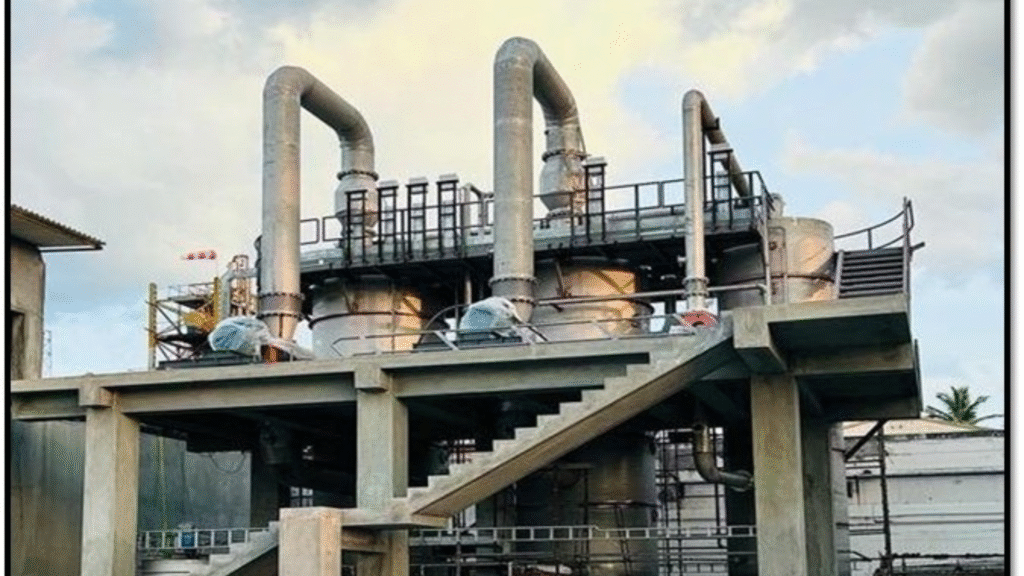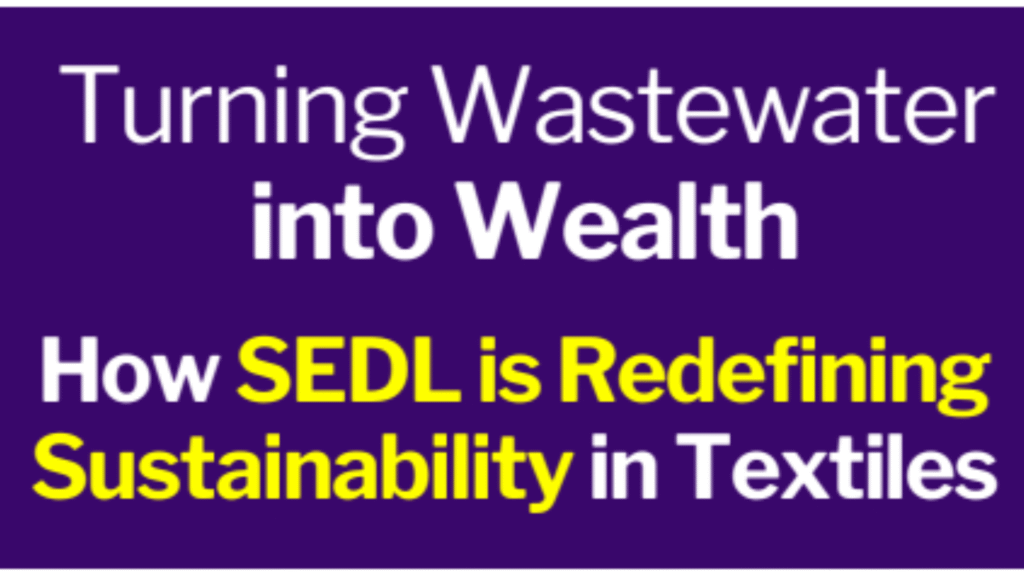
Water has always been the textile industry’s greatest ally and its
greatest challenge. Every meter of fabric, every shade of dye,
every finish owes its existence to water. Yet as freshwater
resources decline and regulatory pressures rise, the textile industry
faces a pressing reality: the traditional “use-and-dispose”
water model is no longer viable. At Spray Engineering Devices
Limited (SEDL), we believe the future lies not in consuming more
water, but in recovering, reusing, and reimagining what is already
at hand. Wastewater, often dismissed as an unwanted
byproduct, can in fact become the cornerstone of a circular,
resource-efficient economy.

Conventional effluent treatment has always focused on compliance, treating wastewater to meet discharge norms. While necessary, this approach overlooks the true potential of effluent as a resource reservoir.

SEDL’s philosophy is different. With our advanced MVR Based Low Temperature Evaporator (LTE®), wastewater is no longer just treated — it is transformed:
In this model, nothing is wasted. Water, salts, dyes and energy flow back into the system, creating a self-sustaining loop.
A leading example of this transformation can be seen at Arthanari Loom Center (ALC) in Salem, Tamil Nadu. Serving iconic global brands such as ZARA, GAP, and Ralph Lauren, ALC had to meet both customer sustainability expectations and strict Zero Liquid Discharge regulations from Central Pollution Control Board & Tamil Nadu Pollution Control Board.
The challenges were formidable:
Traditional biological treatment methods and primary effluent plants could not adequately reduce salt loads or COD levels, leaving ALC in need of a cutting edge, reliable solution. SEDL’s solution was decisive. With SEDL’s MVR-based LTE®, ALC unlocked the hidden value in its wastewater while achieving the following key outcomes:

What began as a regulatory necessity became a strategic advantage. Today, ALC not only meets environmental standards but also reduces costs, enhances efficiency, and strengthens its brand as a sustainable supplier to the world’s biggest fashion retailers.
The ALC story illustrates a larger truth: wastewater is not a liability; it is a resource waiting to be unlocked. For textile manufacturers worldwide, the benefits are compelling:
The textile industry of tomorrow will not rely on ever-depleting freshwater reserves. Instead, it will thrive on closed-loop systems where every drop of water, every grain of salt, and every unit of energy is reclaimed and reused. SEDL’s mission is to make this future accessible, one textile plant at a time, across the globe. By helping manufacturers reclaim, reuse, and reintegrate resources, we are proving that wastewater is not waste at all. It is the foundation of a circular economy that benefits industry, society, and the globe alike.
 Closing the Loop: How SEDL is Enabling a Water-Independent Textile Industry
Closing the Loop: How SEDL is Enabling a Water-Independent Textile Industry A New Vision for Wastewater inthe Textile Industry
A New Vision for Wastewater inthe Textile Industry Evaporate the Waste, Elevate the Worth: A New Era in Water Recovery
Evaporate the Waste, Elevate the Worth: A New Era in Water Recovery Driving Innovation in Industrial Solutions – The SEDL Advantage
Driving Innovation in Industrial Solutions – The SEDL Advantage Automation & Efficiency: How SEDL is Transforming Industrial Operations
Automation & Efficiency: How SEDL is Transforming Industrial Operations